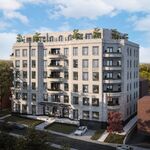It's all about how the community developed and the employment nodes. To build an effective LRT that is not only busy during rush hour a city needs to have linear employment, destination and to a lesser degree residential nodes. KW fits this perfectly with everything build along King St and hopefully after the LRT is built will become more and more dense.
Ottawa has a similar linear build along the river (for the west end of the LRT).
Which other cities in Canada are built in this linear fashion that do not already have high order transit?
KW also did not go for the most expensive option but a practical solution which can be built in a short time frame. By using old rail beds and compromising on how to get through downtown and uptown they did not have to spend additional money burying the line. I think other municipalities (including Toronto) could learn from them how to implement a solution quickly and economically.
The term “cities†is somewhat subjective. There are CMA’s, municipalities, regions, regional municipalities, centres, areas, etc. But if we’re looking at just cities, only in Ontario, the largest are:
Toronto – 2.5M –
has railed transit
Ottawa – 900,000 –
has railed transit
‘Sauga – 715,000 – no railed transit
Brampton – 525,000 – no railed transit
Hamilton – 520,000 – no railed transit
London – 366,000 – no railed transit
Markham – 300,000 – no railed transit
Vaughan – 290,000 – other than a short stub for Concord, no railed transit
Kitchener – 220,000 –
building railed transit
*"railed transit" meaning local, and not commuter service
**didn’t include BRT (I don’t care for buses)
Arguably each one of these cities has some degree of ‘linear employment, destinations, and residential nodes’ like KW. Just like how in KW not everything is planned around King St - there are ample subdivisions, and suburban office/industrial parks in areas well distanced from King.
I think KW is a good example of how LRT can be effective by not following a road and its linear development. And if the LRT were to stay on King, then it would miss major hubs like UW entirely. There’s a recurring view amongst planners (like Keesmat for one) that a transit route can only be successful if it follows a road (either in the middle of it, or under it). And if a route doesn’t follow a road, then we’re seeing some form of cheapening and decrease in quality of service. Obviously that’s true sometimes, but it’s not always the case.
By using affordable/practical solutions like following an old rail bed, using green spaces, or traveling alongside a highway - service speed and reliability is greatly increased over a system that has to follow a road’s speed limit and wait several mins for each traffic signal to cycle through. Or deal with fender benders and blocked intersections. As well, the line is given the opportunity to travel more directly to important centres than if it were to do so by disjointedly following the road system.








